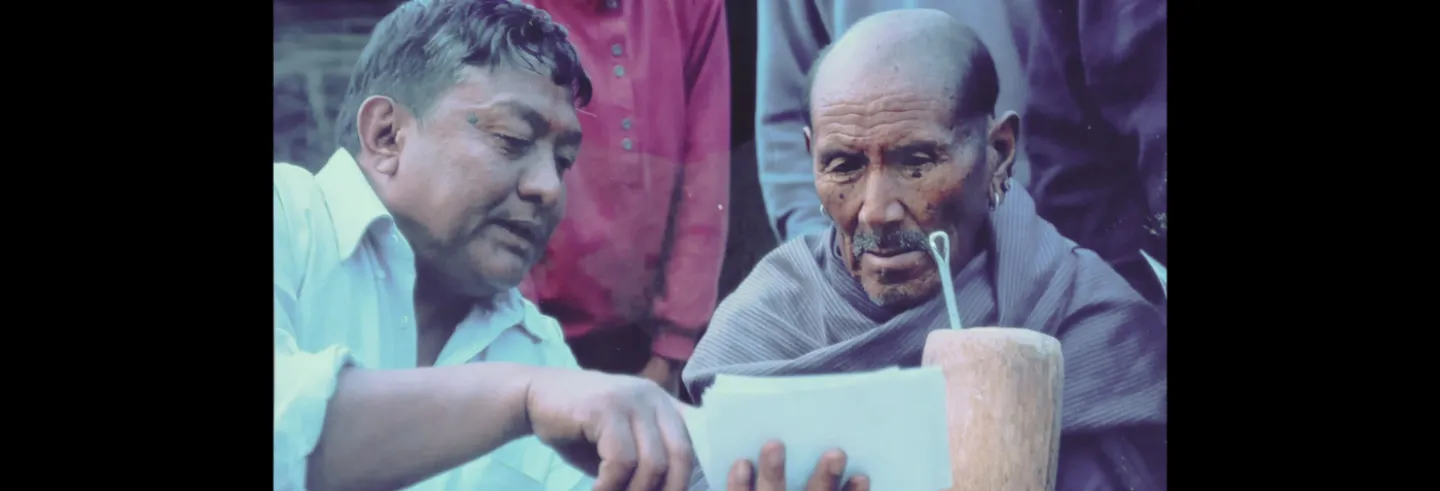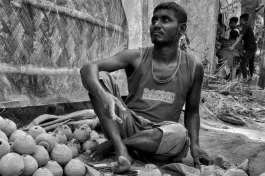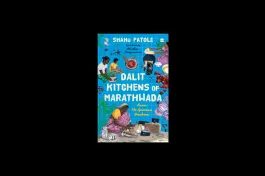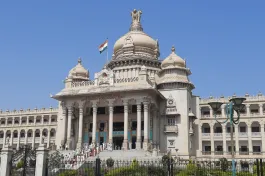In 2023, I visited Nagaland for the first time. Browsing at a bookstall in the hilly village of Khonoma, I came upon a copy of Kaka D. Iralu’s Nagaland and India.
The name was faintly familiar; I had heard it during my master’s program at the Tata Institute of Social Sciences, Mumbai, decades earlier. As I read the book more closely, I realised how Nagaland and India exemplified radical innovativeness in approach and writing style. It also inaugurated multifarious lines of analysis.
Iralu’s historicising of Naga pasts paves the way for a lengthier and bolder discussion on the rise of insurgency and counter-insurgency operations in the region.
Thus, it was confusing to be later told by an acquaintance, or two, that Iralu’s prose was mostly 'anecdotal,’ if not ‘journalistic.’ With time I also noted how Iralu’s name amounted to a passing reference in the literature of the North East, and sometimes not even that. Few libraries carried his work. I found no book review on the internet, save a blog post by a Naga youth. A peer with better academic credentials than mine felt that Nagaland and India lacked the necessary ‘theoretical edge.’
Such conclusions are hasty, to say the least. Iralu’s historicising of Naga pasts paves the way for a lengthier and bolder discussion on the rise of insurgency and counter-insurgency operations in the region. Revisiting his work informs the ongoing academic churning within areas as diverse as environmental history, food sovereignty, and religious politics.
***
Kaka Iralu first put pen to paper in the late 1990s. This was a time when the separatist outfit, the National Socialist Council of Nagaland (NSCN), had risen to the fore from the failures of the Shillong Accord of 1975, which had aimed at putting an end to the insurgency in the region. In 1997, however, peace was given a second chance when a key faction of the NSCN headed by Isak Swu and T. Muivah, the NSCN-IM, decided to sign a ceasefire agreement with the union government. This not only initiated a long and complex process of negotiation over the question of Naga sovereignty.
An early draft of the book [...] was rejected by a publisher on the ground that it was “explosive.” It was “secretly printed”.
The opening of peace talks coincided with Kaka Iralu’s coming into his own. Iralu’s life history gives us reason to believe that his political acumen and writing skills were largely self-taught. Born in 1956, through the better part of his youth he bore witness to the incarceration, torture, and lynching of friends, relatives, and fellow Nagas, at the hands of the Indian army. For a brief period in between, Iralu had also been associated with the Union Biblical Seminary in Yavatmal, Maharastra. Travels across the country never left him feeling like an integrated citizen. Iralu’s return to Nagaland found him channelling his sense of angst through reading and travel to make better sense of a Naga collective past, with the prospect of envisioning a brighter future.

In his preface, Iralu writes that an early draft of the book – then titled Naga Saga: The Blood and the Tears – was rejected by a publisher on the ground that it was “explosive.” It was “secretly printed” in 2000 at a press in Guwahati, Assam. Bookstores refused to put the book on display. The first few hundred copies were distributed personally in Guwahati, Calcutta, and Delhi by Iralu and a close group of friends.
Despite the threat involved, the book made the necessary inroads. Iralu gained the opportunity to publicly lecture and speak on the cause of Nagaland, as opposed to being arrested. A revised version of the book with minor changes was offered in 2005, at personal cost again. The process was repeated four years later in 2009. Fearing that his most immediate reading audience might not find the word ‘saga’ relatable, the final and last version of the book was put forth in 2017 under the title of Nagaland and India: The Blood and the Tears — the book that had serendipitously come into my hands.
***
If we note this genesis of Nagaland and India, we are in a better position to recognise how seminal it is. At a time when it was practically unimaginable, Iralu did the basic spadework to problematise Nagaland’s relationship with India. Some anachronism notwithstanding, Iralu wastes no time underscoring how the Naga tribes had safeguarded their territories from ‘Indian rajas,’ such as those of Manipur, Tipperah, and Cachar. Furthermore, he gives words to the way Naga tribes contended with the foreign impact on cultural, economic, and political fronts, with the advent of European colonialism. The Indian National Congress had no presence in the region till after 1947, we are usefully reminded.
Iralu explains how treaties were struck, and large portions were demarcated as ‘unadministered territories’ and ‘excluded areas’ by the British administration. If Anglo-Naga contestations unfolded on a turf Iralu describes as ‘unconnected and separate’ from the efforts of the INC, then it does make for an intriguing question as to why Nagaland should be regarded as an inherent part of the Indian nation-state. Sometimes, this question is posed with a terseness that may not augur with our expectations of academic rigour or finesse. But on the point of history, even noted historians such as Ramchandra Guha now acknowledge that "no Gandhian leader in a white cap had ever visited these hills," before independence.
Retaining his sense of chronology, Iralu illustrates the many failings of democracy in the post-1947 period. A plebiscite organised by the Naga National Council, under the leadership of A. Z. Phizo, was disregarded by the Indian government. The area was subsequently declared ‘disturbed’, regiments of the Indian army were sent in, democratic freedoms were suspended, and human rights violations soared.
Roughly at the time Iralu was delivering the 2009 edition of the Naga Saga, academic historians such as Sajal Nag drew attention to Nehru’s "regret" in the handling of matters, which has nonetheless left behind an ignoble model for the handling of "minority nationalisms" in South Asia. However, Iralu’s retrospections are richer for the fact they go beyond explicating the afore model in simplistic terms. Nagaland and India grows out of an insider’s view that draws deeply from personal experiences, interviews, village accounts, and diaries of survivors and insurgents, many of whom are now dead. As a result, we see the embeddedness of a range of topics within the broader struggle for sovereignty.
Iralu’s exposition requests us to slow down and narrow the scale of interest from the global to the rumblings within the belly of the nation-state, where alone we are left to discern the intersections between recuperative food practices and the quest for (Naga) sovereignty per se.
Nagaland and India, for instance, details the state’s role in inducing hunger in the region to stave off rebellion. Iralu rattles off the number of granaries and villages, and hectares of forests burned by the Indian army to this end. The collective pain of seeing one’s harvest, hearth, and homelands go up in flames explains how food became a trigger point in the escalation of violence. These parts of Iralu’s exposition inform the discussions on ‘food sovereignty,’ or the more recent bid of scholars to make sense of the penetrative influence of pesticide and agri-business corporations on pre-existing food cultures, including those of the eastern Himalayas. Iralu’s exposition requests us to slow down and narrow the scale of interest from the global to the rumblings within the belly of the nation-state, where alone we are left to discern the intersections between recuperative food practices and the quest for (Naga) sovereignty per se. This is where we stumble upon dense narratives on the wild and uncooked foods that got incorporated into rebel diet – edible grass, tubers, beetles, crabs, and other forms of raw meat.
In a similar vein, Nagaland and India informs our understanding of the ecological pasts of the region. Iralu’s intimate reconstruction of Nagaland’s past based on oral narratives leaves us reeling in the kaleidoscopic details of forests and rivers here, going beyond what purely archival histories could deliver. He tells us of the Naga women who soaked their shawls in restless streams of the Brahmaputra to bring water home under conditions of surveillance and patrol. We are also provided vivid details of how tributaries, such as the Dzuna, were reddened in the wake of gunfights in the late 1960s. At least three chapters deal with river crossings as part of expeditions to neighbouring countries, that we return to shortly. Such crossings successfully open an intimidating landscape, the ‘infernal jungle of tropical plants,’ connecting the Brahmaputra basin with the plains of the Irrawaddy. Such notes are indispensable for the environmental history of the Northeast.
***
In Iralu's writing, the forested landscapes emerge as more than just impenetrable jungles, populated by wild beasts. They are simultaneously home to mythological "serpents," brotherly "weretigers," and forest "spirits" who come to the aid of insurgents at critical moments. These detours do not detract from Iralu’s political objectives, but give them their necessary flesh. In following such otherworldly powers through Iralu’s text, we are left to cognise the fault lines between animist faith systems and evangelical beliefs. In light of the recent attention imparted to the role of Baptist missionaries, Iralu’s writings achieve something unparalleled. If they illumine disparities in faith systems, they also shed light on those moments of hardship that syncretised the prevailing faith in forest spirits, with that reposed in the Christian Holy Trinity. Current scholarship can only gain by paying greater attention to these processes, which places us squarely between the political ecology and theology of the prevailing regime.
In following [...] otherworldly powers through Iralu’s text, we are left to cognise the fault lines between animist faith systems and evangelical beliefs.
Several passages in Nagaland and India present an uncannily similar exposition to readers who would have read the anthropologist Alpa Shah’s work on the Maoist armed insurgency, Nightmarch: A Journey into India’s Naxal Heartlands. Relying on her two weeks of intensive walking with Adivasi guerrillas in central India, Shah chronicles the moments of ideological discord, ethical conundrums, and human frailties. This yields a lucid exposition of the "meanderings, let-downs, and puzzling persistence" of revolutionary desires.
Iralu, in his turn, invokes the memories of ‘night marchers’ that set out on expeditions to China and Pakistan in the mid-1960s and mid-1970s, to procure arms and training as part of the larger bid to gain self-rule. We learn of their jungle pathways cutting through the Kachin region, the Chin hills, and past the flooding rivers in the form of the Chindwin, Mali Kha, and the Tarung Hka. Iralu dwells on how Naga rebels – or shall we say, ‘marchers’ – moved past land and water in the still of the night like "ghosts and shadows." Not unlike Shah, Iralu does not fail to account for hunger, illness, longing, injury, cramps, internal discord, fever, fatigue, and infections that plague the troops. Despite this, there are always moments of humour, such as those relating to the events of falling asleep while walking, which also find iteration in Shah’s work.
Iralu's approach boasts of interdisciplinarity, at a time when the idea was in its infant stages within university spaces.
Indeed, it is possible for two scholars studying a similar subject in two different geographies, to arrive at comparable observations, only to conduce a shared lexicon of ‘night marching.’ Yet, one must face the pithy reality that even though Shah’s tour de force has aggregated international fame, Iralu’s ‘night marchers’ remain no more than apparitions on the academic board. To set the balance straight, it is important to remember that Iralu was an early and unsung champion of what Thomas Nail lately describes as a ‘kinopolitical’ approach – the bid to understand human politics from the vantage point of social mobility. This move within academics makes the Figure of the Migrant, the refugee, and if I may add, the night marchers, critical to an understanding of the neoliberal, conservative, and/or predatory state, rather than the other way around.
***
Iralu’s renegade style and approach to a subject might have been another factor that might have blindsided scholars to the merits of his writings. His prose does not stem from any specific branch of the humanities – history, anthropology, or sociology – thus making it available for a ready coterie or audience. At the same time, Iralu's approach boasts of interdisciplinarity, at a time when the idea was in its infant stages within university spaces.
An initial chapter gives us a taste of the same through a 7-page long ‘Note to Britain.’ This Note resembles a scribe’s “open letter,” albeit one addressed to our colonial predecessors. It indicts the British Empire for failing to guarantee Nagaland its sovereignty in a manner akin to Nepal, Ceylon, and Burma, and the repercussions of the same. It is thickly referenced as far as history is concerned, it dips into the lived experiences of the Naga folk in an (auto-) ethnographic vein, and gives us a taste of a journalistic flare that awaits us in the pending chapters; all at once.
The daring to transgress rigid disciplinary borders goes a step further. Unlike much of the scholarship of his time, Iralu allows his prose to be complimented with poems coming from his wife, Easterine Kire. In this appreciable departure from the academic norm, verses of ‘Love’s vigil,’ ‘Land where life is good,’ and ‘Our story’ serve to decompress a text that is otherwise heavy with details of rape, murder, and incarceration, and create the necessary space for mourning and self-healing.
One is left to wonder if Iralu’s legacy has not become akin to that of the ‘night marchers’ he sought to bring to light: the marchers who broke borders, covered vast grounds, and dreamt of a better future with an audacious self-belief that was theirs alone.
If Nagaland and India reads like a narrative telling of events it is because it aims to give space to the voices of Iralu’s respondents as against pandering to theorists sitting in the metropolitan West. But this outer absence of theory should not be taken literally. Iralu might not be inclined to ham-handedly fit the social complexities into a Marxian meta-narrative or given model of revolutionary socialism. Still, there is much in the work that holds the torch to the challenges that tribal differences or ‘shortsightedness’ posed for cadre building. Frameworks such as ‘internal colonialism’ are not pompously invoked. Despite this, Nagaland and India does well to give an accurate picture of how ‘free’ India perpetuated a colonial legacy within Nagaland through the use of draconian laws (the Unlawful Activities (Prevention) Act of 1967, which has lately been in news, being one).
***
Three years after Nagaland and India was offered, Kaka Iralu passed away in 2020. On putting down the book, I was left with a clearer sense of how it resonates with the work apace in several fields of study. Despite this, Iralu’s name remains close to a whisper in much of the literature. To view this disparity in scholarly attention is to acknowledge the politics of scholarship of our times, where academic pedigree, privilege, and affiliation continue to influence knowledge generation and circulation. One is left to wonder if Iralu’s legacy has not become akin to that of the ‘night marchers’ he sought to bring to light: the marchers who broke borders, covered vast grounds, and dreamt of a better future with an audacious self-belief that was theirs alone.
(I would like to thank Diezevizo Iralu and the noted peace activist Niketu Iralu for their kind inputs, suggestions, and photographs.)
Varun Sharma is an independent researcher based out of Tezpur, Assam.









